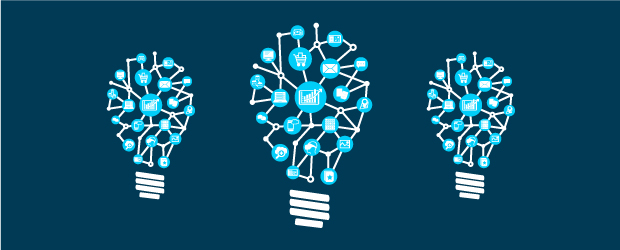Several interconnected trends in analytics capability are causing companies to advance their analytics efforts in pursuit of competitive advantage. The trends for 2016 include the following:
Improving ease-of-use
Analytics of the past, especially more advanced analytics, often required command-line code. Today, analytics software vendors have simplified end-user interfaces and made visualizations easier to develop using just point-and-click. Preparing data and integrating multiple data sources has also become easier.
An emerging trend is automation techniques that enable more advanced analytics. Soon analytics visualizations will suggest a query model for the variables of interest based on an initial examination of the data.
This improving ease-of-use means companies can deliver an initial analytics success quickly and then build on that success to become more data driven.
Consumerization of analytics
Since the inception of analytics, IT has been heavily involved in the development of analytics software and in the operation of the supporting computing infrastructure. More recently companies have been broadening the end-user audience for analytics enabled by improving ease-of-use.
This consumerization trend is continuing with end-users developing their own self-service analytics and performing their own visual data discovery. Embedding analytics directly into Excel workbooks is another consumerization trend.
Consumerization means companies can derive more business benefit from analytics as more end-users apply the technology in innovative ways.
Shifting from respond to predict
To date, most of the analytics effort and investment has been focused on understanding and responding to observations in the operational data that companies create internally or consume from external sources. While valuable, this analytics focus is almost entirely historical.
The emerging analytics trend shifts to a future focus in an effort to become predictive. Predictive analytical models are becoming more sophisticated to predict business events in the near-term future.
This predictive focus means companies can increase their business benefit from analytics.
Applying analytics to new data
Until very recently, the target of analytics was just the subset of corporate data that is highly structured as rows and columns stored in internal relational databases.
Now, a trend of targeting other types of data with analytics is emerging. This new data includes text analytics (unstructured text), social media analytics, geospatial analytics (location-based data), and clickstream analytics (customer click behaviour on websites).
Adding new data to the mix means companies are making better use of their diverse data to improve decision-making to achieve more business benefit from analytics.
Business analysts using more advanced techniques
Until recently, much of the analytics work was being performed by data scientists, statisticians and scenario modelers. While talented, these professionals are expensive and difficult to understand at times.
Now an emerging trend is using business analysts for analytics. These analysts are starting to use more sophisticated analytics techniques such as predictive modeling. They are building relatively straightforward models. They are also collaborating with the wizards to build and validate models.
Adding business analysts to the team means companies are controlling the cost of analytics and ensuring that models incorporate a grounded business sense and not just a sophisticated theoretical perspective.
Operationalizing analytics
Until now, the analytics group operated separately from the daily business processes of companies. Analytic results were used as input to tuning business processes.
Now a trend of using analytics routinely within operational business processes is emerging. No longer do functions, such as production, marketing or supply chain, rely on analytics specialists to provide analytics results. Now, analytics are built into their line-of-business application.
Operationalizing analytics is valuable because it’s immediate and ensures analytics is directly actionable.
Want to know more?
Annually Gartner publishes its Magic Quadrant for Business Intelligence and Analytics Platforms report. The report contains an excellent summary of analytics concepts plus summary assessments of many software vendors.
The web pages of leading analytics software vendors, such as SAS, Tableau, Tibco Spotfire and VISAGE are worth exploring.
The monograph “Three Steps to Put Predictive Analytics to Work” published by SAS is worth scanning.
Improving data management processes and applying visual analytics software are the solution to squeezing business value from big data. If you’re struggling to make sense of the flood of data streaming into your organization, improving data management processes and applying visual analytics software are the solution to squeezing business value from it.
Can you share more ideas for how analytics applications have delivered benefits to your company?
